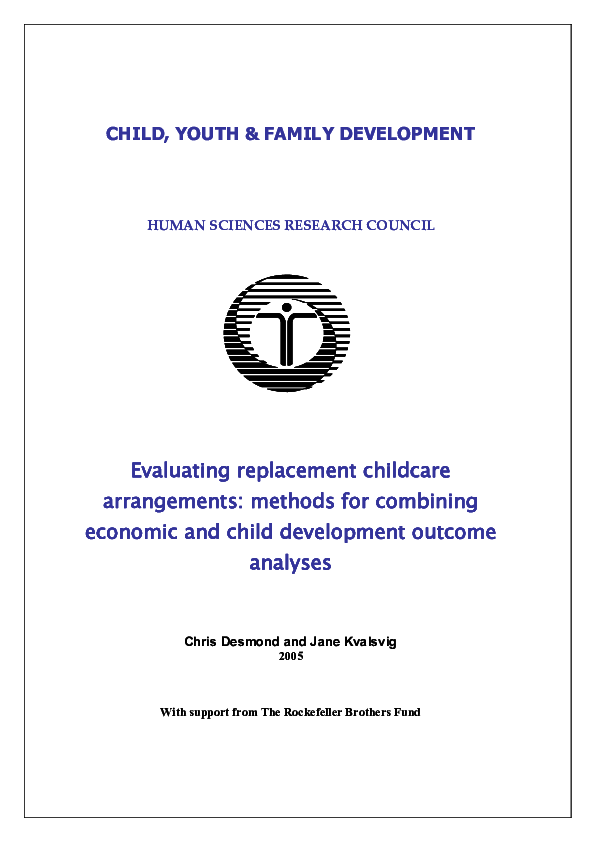
Child, Youth & Family Development. Evaluating replacement childcare arrangements: methods for combining economic and child development outcome analyses
Publication year:
2005
English
Format:
pdf (1003.3 KiB)
Publisher:
HSRC, Human Sciences Research Council
HIV/AIDS has many impacts, among which is the effect of the epidemic on children. Children may themselves be infected, they may be living with, and possibly caring for, ill parents or other family members, and many will lose one or both parents. There are numerous aspects that will be required in a comprehensive response to these impacts, one of which is the provision of care for those who have lost parents or whose parents are too ill to care for them. While only one aspect of the required response, this replacement care, involves difficult decisions. Governments, non-governmental organisations (NGOs) and individuals are already struggling with alternative approaches, or models, of providing support to children who need new care arrangements as a result of the loss or incapacitation of their caregiver. As the scale of the problem increases, efforts to respond to it will have to be expanded, including those aimed at providing replacement care. There are many different ways of providing care to children, and a number of alternative models of care are appearing. Some children remain in their original homes and another family member takes on the role of primary caregiver. At the other extreme, some children are removed from their homes and communities and live in formal institutions. In between these two extremes are a host of alternative models, from foster care to children’s villages, etc. While a range of options is required, as no one model will be appropriate in all situations and settings, decisions will have to be made as to which models should form the core of the response. Again it will not be a single set of models that should form the core in every setting, as circumstances may alter requirements. What is needed are ways to identify appropriate models and to supply decision makers with relevant information on the alternatives in order to support the policy making process. A variety of different types of information are required to inform decision makers in this area and the aim of this paper is to develop methods of providing some of that necessary information. Its emphasis is on linking the costs of models to their outcomes.
Read full abstract
Authors
View & Download
Document information
Authors
Format
Country
Rights
© Author/Publisher
Found a mistake? Help us improve!
If you have noticed a document assigned to the wrong author or any other inaccuracies, let us know! Your feedback helps us keep our data accurate and useful for everyone.
Share
Link
